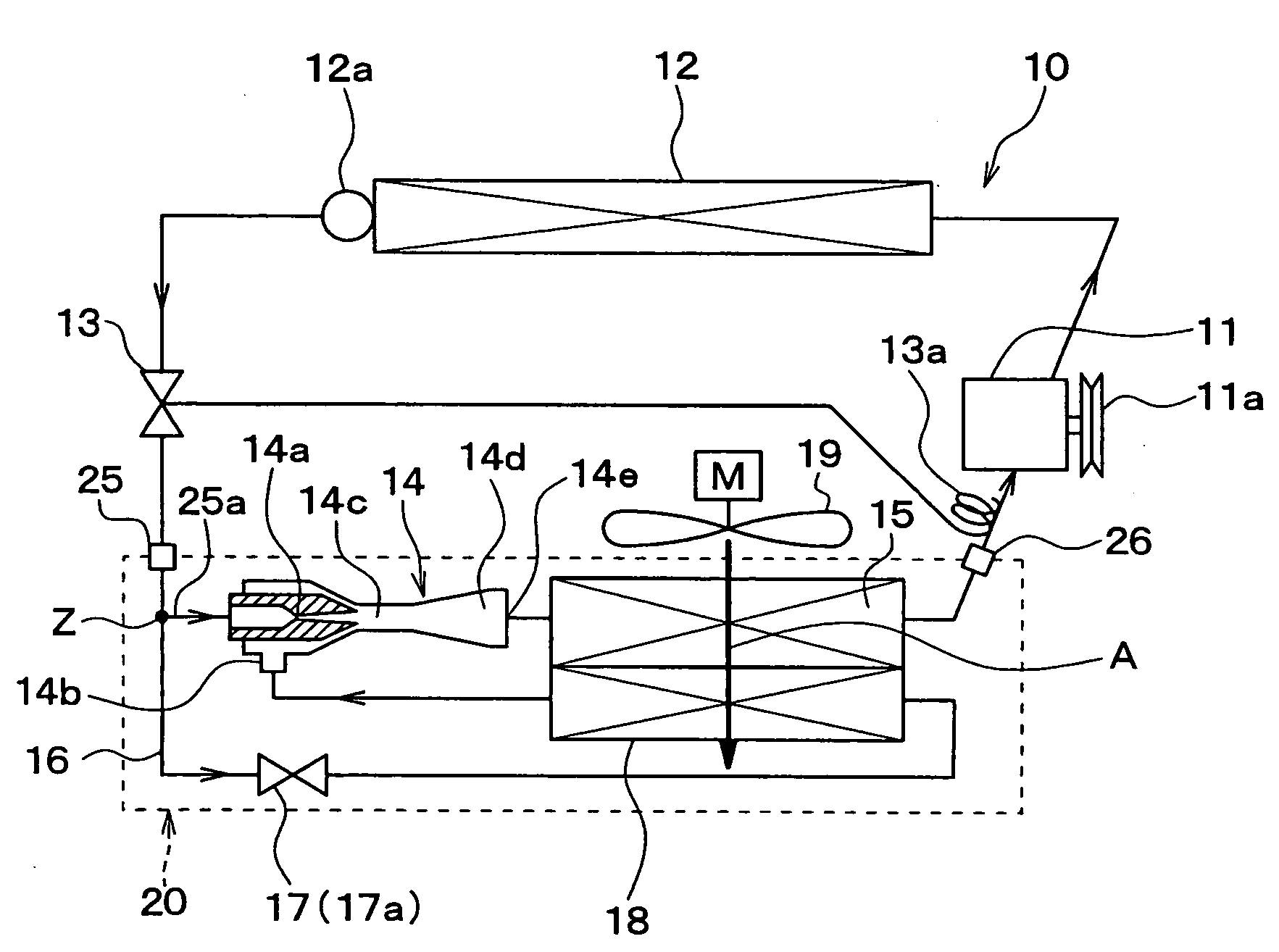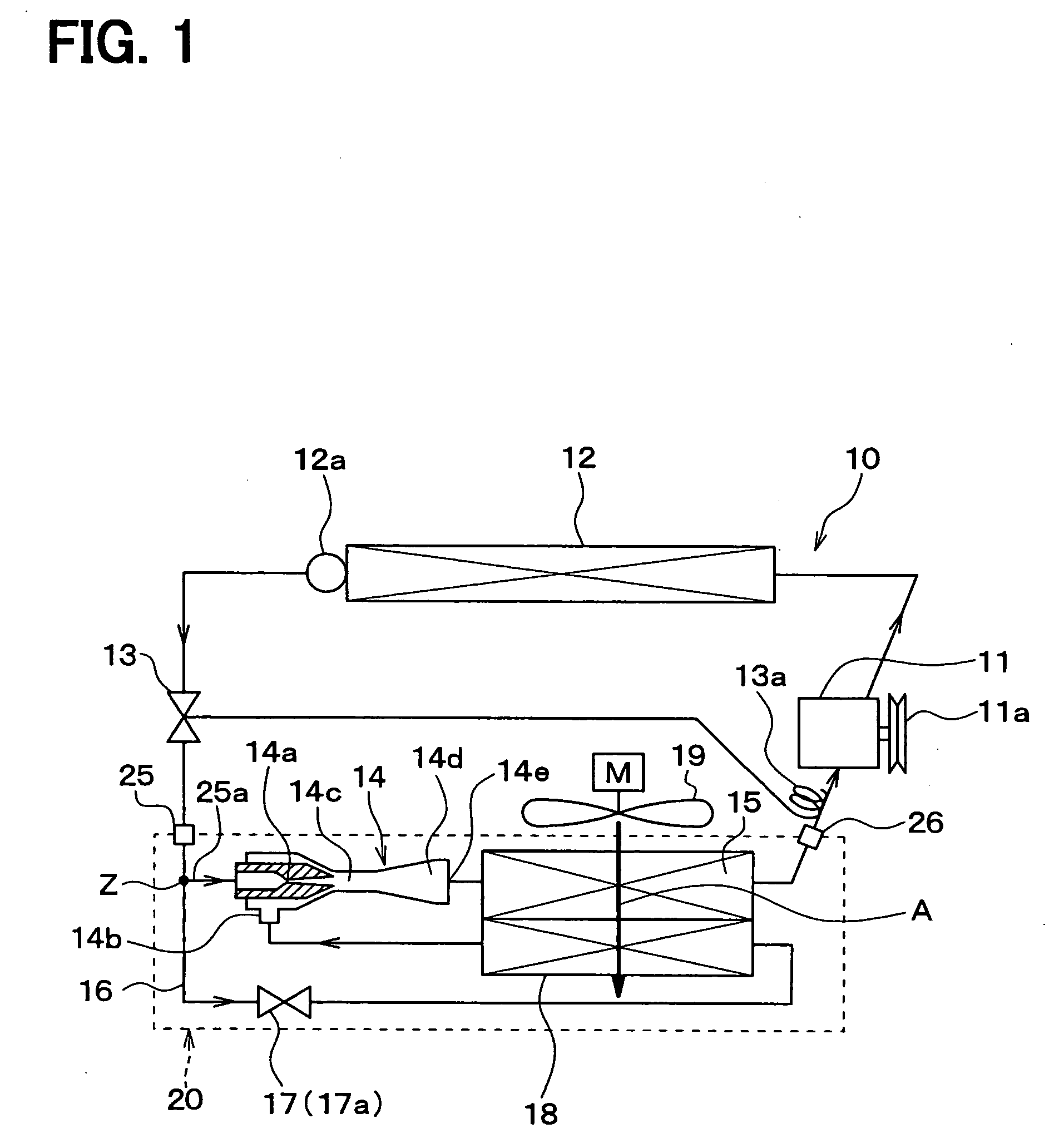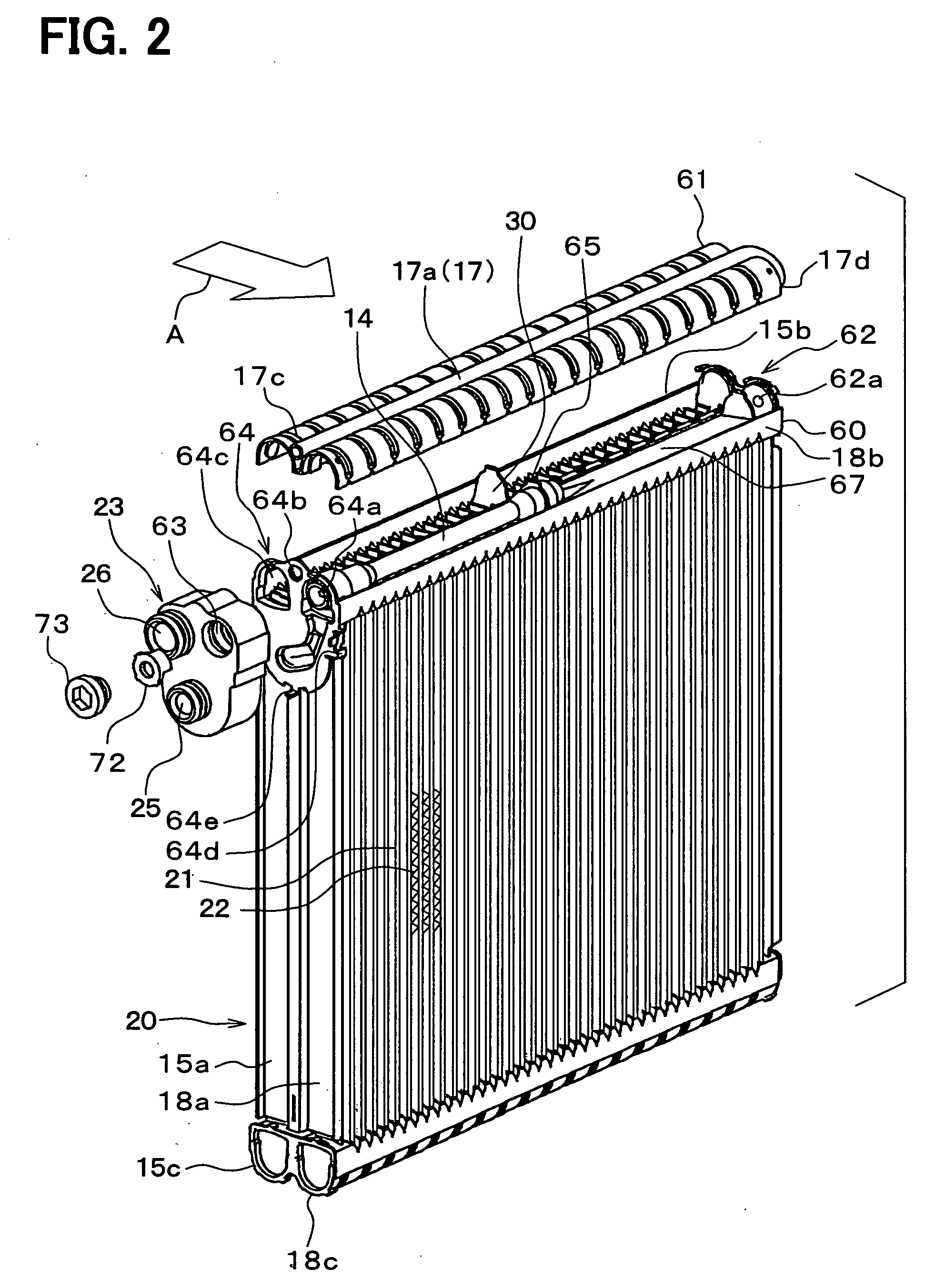Unit for refrigerant cycle device
a cycle device and refrigerant technology, applied in indirect heat exchangers, lighting and heating apparatus, transportation and packaging, etc., can solve the problems of difficult piping structure (refrigerant passage structure) for distributing refrigerant to the tubes of the first and second evaporators, and achieve the effect of simple passage structure of the unit for the refrigerant cycle devi
- Summary
- Abstract
- Description
- Claims
- Application Information
AI Technical Summary
Benefits of technology
Problems solved by technology
Method used
Image
Examples
first embodiment
[0040]A first embodiment of the invention and examples of the first embodiment will be described below with reference to FIGS. 1 to 18. In the embodiment, a unit for an ejector refrigerant cycle device and an ejector refrigerant cycle device using the unit will be now described. For example, the unit is an evaporator unit or an ejector-equipped evaporator unit, for a refrigerant cycle.
[0041]This unit is connected to other components of the refrigeration cycle, including a condenser, a compressor, and the like, via piping to constitute a refrigerant cycle device including an ejector. The unit of the embodiment is used for application to an indoor equipment (i.e., evaporator) for cooling air. The unit may be used as an outdoor equipment in other embodiments.
[0042]In an ejector refrigerant cycle device 10 shown in FIG. 1, a compressor 11 for drawing and compressing refrigerant is driven by an engine for vehicle traveling (not shown) via an electromagnetic clutch 11a, a belt, or the lik...
second embodiment
[0177]In the first embodiment, the expansion valve type cycle including the liquid receiver 12a on the outlet side of the radiator 12, and the expansion valve 13 disposed on the outlet side of the liquid receiver 12a is employed. However, in a second embodiment, as shown in FIG. 19, an accumulator 50 is provided which serves as a liquid-vapor separator for separating the refrigerant into liquid and vapor phases on the outlet side of the first evaporator 15, and for storing the excessive refrigerant in the form of liquid. The vapor-phase refrigerant is derived from the accumulator 50 into the suction side of the compressor 11.
[0178]In the accumulator cycle of the FIG. 19, a liquid-vapor interface between the vapor-phase refrigerant and the liquid-phase refrigerant in the accumulator 50 is formed, and hence it is not necessary to control the superheat degree of the refrigerant at the outlet of the first evaporator 15 by the expansion valve 13 like the first embodiment.
[0179]Since the ...
third embodiment
[0181]The third embodiment is a modified one from the second embodiment. As shown in FIG. 20, the accumulator 50 is integrally incorporated into the integrated unit 20 as one element. The outlet part of the accumulator 50 constitutes the refrigerant outlet 26 of the entire integrated unit 20. In the third embodiment, the other parts can be made similarly to the above-described second embodiment.
PUM
 Login to View More
Login to View More Abstract
Description
Claims
Application Information
 Login to View More
Login to View More - R&D
- Intellectual Property
- Life Sciences
- Materials
- Tech Scout
- Unparalleled Data Quality
- Higher Quality Content
- 60% Fewer Hallucinations
Browse by: Latest US Patents, China's latest patents, Technical Efficacy Thesaurus, Application Domain, Technology Topic, Popular Technical Reports.
© 2025 PatSnap. All rights reserved.Legal|Privacy policy|Modern Slavery Act Transparency Statement|Sitemap|About US| Contact US: help@patsnap.com



